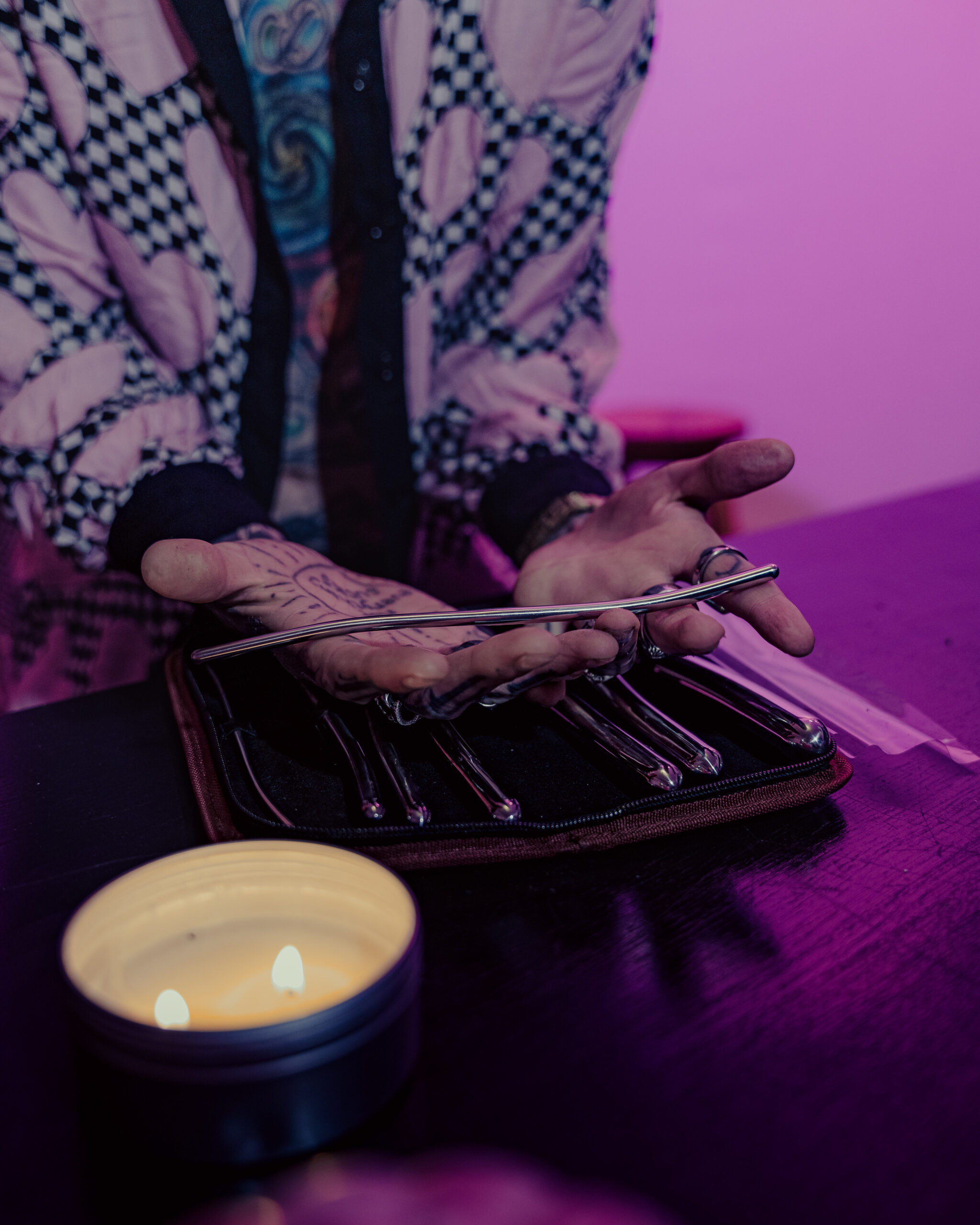Understanding the Gender Binary
The traditional understanding of gender often relies on a binary system, categorizing individuals as either male or female. This framework, while seemingly simple, can be limiting and fail to capture the full spectrum of human gender experiences. Non-binary identities challenge this binary, offering alternative ways of understanding and expressing gender that exist outside the confines of male and female.
The Traditional View
The traditional view of gender frequently presents a binary system, rigidly classifying individuals as either male or female at birth. This perspective often associates certain characteristics, behaviors, and roles with each gender, creating expectations and norms that can be restrictive. For instance, boys are typically encouraged to be assertive and strong, while girls are often expected to be nurturing and passive. This binary framework may lead to the exclusion or marginalization of individuals who do not conform to these prescribed norms.
Limitations of the Binary
The traditional understanding of gender often relies on a binary system, categorizing individuals as either male or female. This framework, while seemingly simple, can be limiting and fail to capture the full spectrum of human gender experiences. Non-binary identities challenge this binary, offering alternative ways of understanding and expressing gender that exist outside the confines of male and female.
The traditional view of gender frequently presents a binary system, rigidly classifying individuals as either male or female at birth. This perspective often associates certain characteristics, behaviors, and roles with each gender, creating expectations and norms that can be restrictive. For instance, boys are typically encouraged to be assertive and strong, while girls are often expected to be nurturing and passive. This binary framework may lead to the exclusion or marginalization of individuals who do not conform to these prescribed norms.
Non-binary identities encompass a wide range of gender experiences that fall outside the traditional male/female dichotomy. Here are some key aspects of non-binary identities:
- Non-binary individuals may identify as neither male nor female, or they may identify as both male and female.
- Gender identity is distinct from sexual orientation. A non-binary person can be attracted to any gender.
- The term “non-binary” is an umbrella term that encompasses many different identities, such as agender, bigender, genderfluid, and more.
Exploring Non-Binary Identities

The traditional understanding of gender often relies on a binary system, categorizing individuals as either male or female. This framework, while seemingly simple, can be limiting and fail to capture the full spectrum of human gender experiences. Non-binary identities challenge this binary, offering alternative ways of understanding and expressing gender that exist outside the confines of male and female.
Defining Non-Binary
The traditional view of gender frequently presents a binary system, rigidly classifying individuals as either male or female at birth. This perspective often associates certain characteristics, behaviors, and roles with each gender, creating expectations and norms that can be restrictive. For instance, boys are typically encouraged to be assertive and strong, while girls are often expected to be nurturing and passive. This binary framework may lead to the exclusion or marginalization of individuals who do not conform to these prescribed norms.
Non-binary identities encompass a wide range of gender experiences that fall outside the traditional male/female dichotomy. These identities challenge the limitations of a two-gender system, recognizing the fluidity and diversity of human gender expression. Some common non-binary identities include agender, bigender, genderfluid, and genderqueer.
It’s important to remember that gender identity is personal and unique to each individual. Non-binary individuals may express their gender in various ways, through clothing, hairstyle, pronouns, or other means of self-expression. Respecting an individual’s chosen name and pronouns is crucial for creating a supportive and inclusive environment.
Spectrum of Identities
The traditional understanding of gender often relies on a binary system, categorizing individuals as either male or female. This framework, while seemingly simple, can be limiting and fail to capture the full spectrum of human gender experiences. Non-binary identities challenge this binary, offering alternative ways of understanding and expressing gender that exist outside the confines of male and female.
Non-binary identities encompass a wide range of gender experiences that fall outside the traditional male/female dichotomy. These identities challenge the limitations of a two-gender system, recognizing the fluidity and diversity of human gender expression. Some common non-binary identities include:
- Agender: Individuals who do not identify with any gender.
- Bigender: Individuals who identify with two genders, either simultaneously or at different times.
- Genderfluid: Individuals whose gender identity shifts and changes over time.
- Genderqueer: An umbrella term for individuals whose gender identity falls outside of the traditional binary categories of male and female.
It’s important to remember that gender identity is personal and unique to each individual. Non-binary individuals may express their gender in various ways, through clothing, hairstyle, pronouns, or other means of self-expression. Respecting an individual’s chosen name and pronouns is crucial for creating a supportive and inclusive environment.
Examples of Non-Binary Identities
Non-binary identities encompass a wide range of gender experiences that fall outside the traditional male/female dichotomy. These identities challenge the limitations of a two-gender system, recognizing the fluidity and diversity of human gender expression. Some common non-binary identities include:
- Agender: Individuals who do not identify with any gender.
- Bigender: Individuals who identify with two genders, either simultaneously or at different times.
- Genderfluid: Individuals whose gender identity shifts and changes over time.
- Genderqueer: An umbrella term for individuals whose gender identity falls outside of the traditional binary categories of male and female.
It’s important to remember that gender identity is personal and unique to each individual. Non-binary individuals may express their gender in various ways, through clothing, hairstyle, pronouns, or other means of self-expression. Respecting an individual’s chosen name and pronouns is crucial for creating a supportive and inclusive environment.
Navigating Social Norms
The traditional understanding of gender often relies on a binary system, categorizing individuals as either male or female. This framework, while seemingly simple, can be limiting and fail to capture the full spectrum of human gender experiences. Non-binary identities challenge this binary, offering alternative ways of understanding and expressing gender that exist outside the confines of male and female.
Gender Expression and Presentation
The traditional view of gender frequently presents a binary system, rigidly classifying individuals as either male or female at birth. This perspective often associates certain characteristics, behaviors, and roles with each gender, creating expectations and norms that can be restrictive. For instance, boys are typically encouraged to be assertive and strong, while girls are often expected to be nurturing and passive. This binary framework may lead to the exclusion or marginalization of individuals who do not conform to these prescribed norms.
Non-binary identities encompass a wide range of gender experiences that fall outside the traditional male/female dichotomy. These identities challenge the limitations of a two-gender system, recognizing the fluidity and diversity of human gender expression. Some common non-binary identities include agender (individuals who do not identify with any gender), bigender (individuals who identify with two genders, either simultaneously or at different times), genderfluid (individuals whose gender identity shifts and changes over time), and genderqueer (an umbrella term for individuals whose gender identity falls outside of the traditional binary categories of male and female).
It’s important to remember that gender identity is personal and unique to each individual. Non-binary individuals may express their gender in various ways, through clothing, hairstyle, pronouns, or other means of self-expression. Respecting an individual’s chosen name and pronouns is crucial for creating a supportive and inclusive environment.

Pronouns and Addressing Individuals
Navigating social norms and understanding how to address individuals respectfully can be particularly important when encountering non-binary identities. The traditional use of “he” and “she” pronouns often excludes those who do not identify as strictly male or female.
When in doubt, it’s always best to ask someone what pronouns they use. You can simply say something like, “What pronouns do you prefer?” This shows respect for their identity and creates a more inclusive environment.
Some common non-binary pronouns include they/them, ze/zir, and xe/xem.
Remember that language is constantly evolving, and it’s important to stay open to learning new ways of communicating respectfully with all individuals.
Creating Inclusive Spaces
Navigating social norms and understanding how to address individuals respectfully can be particularly important when encountering non-binary identities. The traditional use of “he” and “she” pronouns often excludes those who do not identify as strictly male or female.
When in doubt, it’s always best to ask someone what pronouns they use. You can simply say something like, “What pronouns do you prefer?” This shows respect for their identity and creates a more inclusive environment.
Some common non-binary pronouns include they/them, ze/zir, and xe/xem. Remember that language is constantly evolving, and it’s important to stay open to learning new ways of communicating respectfully with all individuals.
Challenges and Discrimination

Non-binary identities challenge the traditional binary understanding of gender, which often limits individuals to male or female categories. This binary system can create significant challenges for those whose gender experiences fall outside these confines, leading to feelings of exclusion, marginalization, and discrimination.
Let me know if you’d like me to continue writing.
Misunderstandings and Prejudice
The societal push towards conformity within the gender binary can lead to misunderstandings and prejudice against non-binary individuals. Many people lack awareness or understanding of gender diversity, resulting in assumptions, stereotypes, and even hostility towards those who do not conform to traditional norms.
These misunderstandings can manifest in various ways, from using incorrect pronouns to making insensitive jokes or comments. For example, someone might assume that a non-binary person is simply “confused” about their gender or that they are going through a phase. Such assumptions trivialize the lived experiences of non-binary individuals and perpetuate harmful stereotypes.
The consequences of these prejudices can be profound. Non-binary individuals may experience emotional distress, social isolation, and even physical harm due to discrimination in areas such as healthcare, employment, housing, and education.
Legal and Social Barriers
Navigating a world that is often not designed with non-binary identities in mind presents numerous challenges.
- Legal Barriers: Many legal systems are structured around a binary understanding of gender, requiring individuals to choose either male or female on official documents such as birth certificates, driver’s licenses, and passports. This can be particularly problematic for non-binary people who do not identify with either category.
- Social Stigma and Discrimination: Non-binary individuals often face prejudice and discrimination from society, which may lead to social isolation, bullying, harassment, and even violence.
Overcoming these barriers requires a multifaceted approach that includes:
- Increased Awareness and Education:** Promoting understanding and acceptance of non-binary identities through education and public awareness campaigns can help to reduce stigma and prejudice.
- Legal Reform: Updating legal frameworks to recognize and protect the rights of non-binary individuals is crucial. This includes allowing for gender-neutral options on official documents and ensuring equal access to services and opportunities regardless of gender identity.
- Inclusive Language and Practices:** Encouraging the use of gender-inclusive language and practices in everyday interactions, workplaces, and public spaces can create a more welcoming and respectful environment for all individuals.
Advocacy and Visibility
Advocacy and visibility are crucial for advancing the rights and recognition of non-binary identities. Through advocacy efforts, non-binary individuals and their allies work to challenge discriminatory laws and policies, raise awareness about gender diversity, and promote understanding and acceptance within society. Visibility plays a vital role by showcasing the lived experiences of non-binary people, breaking down stereotypes, and demonstrating the richness and complexity of human gender expression.
Raising Awareness
Advocacy and visibility are essential for creating a more inclusive society for non-binary individuals. Advocacy involves actively working to change systems and policies that perpetuate discrimination based on gender identity. This can include lobbying for legal reforms, organizing protests, and educating policymakers about the needs of the non-binary community.
Visibility, on the other hand, is about ensuring that non-binary people are represented in all aspects of society. It means seeing non-binary individuals in media, literature, and popular culture. It means having non-binary role models and mentors for young people. Visibility helps to normalize non-binary identities and breaks down stereotypes and misconceptions.
Together, advocacy and visibility can create a powerful force for change. By raising awareness, challenging prejudice, and demanding equality, we can create a world where everyone feels seen, heard, and accepted for who they truly are.
Supporting Non-Binary Individuals
Advocacy and visibility are crucial for advancing the rights and recognition of non-binary identities.
Advocacy involves actively working to change systems and policies that perpetuate discrimination based on gender identity. This can include lobbying for legal reforms, organizing protests, and educating policymakers about the needs of the non-binary community.
Visibility plays a vital role by showcasing the lived experiences of non-binary people, breaking down stereotypes, and demonstrating the richness and complexity of human gender expression.
Through advocacy efforts, non-binary individuals and their allies work to challenge discriminatory laws and policies, raise awareness about gender diversity, and promote understanding and acceptance within society.
By raising awareness, challenging prejudice, and demanding equality, we can create a world where everyone feels seen, heard, and accepted for who they truly are.
Promoting Acceptance and Inclusion
Visibility is crucial in the fight for non-binary rights. When people see themselves reflected in media, literature, and everyday life, it validates their experiences and helps others understand their identities. This representation challenges societal norms and creates a more inclusive environment.
Organizations and individuals can contribute to visibility through various means:
- Media Representation: Supporting films, TV shows, and books that feature authentic portrayals of non-binary characters.
- Sharing Stories: Encouraging non-binary individuals to share their experiences through writing, art, or public speaking.
- Creating Safe Spaces: Establishing online and offline communities where non-binary people can connect, support each other, and build a sense of belonging.
Increased visibility not only empowers non-binary individuals but also educates the wider society about gender diversity.
Promoting acceptance and inclusion for non-binary identities requires a collective effort. It starts with education and understanding.
Individuals can learn more about non-binary identities through reliable resources, engage in respectful conversations, and challenge their own biases.
Creating inclusive environments is essential. This includes:
- Using Gender-Neutral Language:**
- Respecting Pronouns: **
- **Creating Safe Spaces: *
Promoting acceptance and inclusion requires ongoing dialogue, empathy, and a commitment to creating a society where everyone feels valued and respected, regardless 365 Lacquer of their gender identity.
intimate missionary
Andrea McGinty Art
- Profhilo Treatment Near Holmbury St Mary, Surrey - November 3, 2025
- Polynucleotides Injectables Near Worplesdon, Surrey - October 31, 2025
- Polynucleotides Injectables Near Kingston Upon Thames, Surrey - October 29, 2025